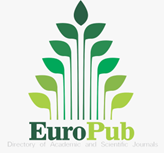The role of e-procurement in promoting government transparency: Lessons from Surabaya
DOI:
https://doi.org/10.61511/emagrap.v2i1.2024.971Keywords:
accountability, e-procurement, procurement of goods and services, transparencyAbstract
Background: This study examines accountability and transparency in the public procurement process, focusing on Surabaya, the first city to implement e-procurement reform. E-procurement leverages the latest information technology to improve procurement efficiency and transparency. Methods: A descriptive qualitative approach was used, using purposive sampling to gather in-depth insights from critical informants who thoroughly understood the research focus. Data were collected from various entities, including the Surabaya City Electronic Procurement Service (LPSE), the City Procurement Unit (ULP), and related public works and private auction companies. Findings: The implementation of e-procurement in Surabaya has succeeded in building an accountable and transparent system. This system has improved the procurement committee’s ability to justify and report the entire procurement process vertically to higher authorities and horizontally to the public. Despite this progress, some suppliers still engage in fraudulent practices, highlighting the need for continued vigilance and commitment. Conclusions: Although e-procurement has significantly improved accountability and transparency in the procurement process in Surabaya, the committee and suppliers need to uphold strong ethical standards to prevent fraud. The e-procurement system alone is not enough. This system must be supported by solid law enforcement and a commitment to integrity to fully realize its potential in creating a fair procurement environment. Novelty/Originality of this study: This study comprehensively evaluates e-procurement implementation in Surabaya, revealing improvements in accountability and transparency and remaining challenges. The findings offer an applicable model for other cities in Indonesia and developing countries to optimize public e-procurement systems.
References
Andrianto, N. (2007). Good e-government: Transparansi dan akuntabilitas publik melalui e-government. Bayumedia. ISBN: 979-3695-80-3.
https://books.google.com/books/about/Good_e_government.html?hl=id&id=xIQNAQAAMAAJ
Arrowsmith, J., Sisson, K., & Marginson, P. (2004). What can ‘benchmarking’offer the open method of co-ordination?. Journal of European public policy, 11(2), 311-328. https://doi.org/10.1080/1350176042000194458
Bahagia, N. (2011). Senarai pengadaan barang/jasa pemerintah: sistempengadaan publik dan cakupannya. Jurnal Pengadaan LKPP, 1.
Bogdan, R., & Taylor, S. (1975). Introduction to qualitative research methods. John Wiley & Sons.
Dwiyanto, A. (2008). Mewujudkan good governance melalui pelayanan publik. Ugm Press. https://books.google.com/books?hl=en&lr=&id=fV0XEAAAQBAJ&oi=fnd&pg=PA1&dq=Dwiyanto,+Agus.+2008.+Mewujudkan+Good+Governance+Melalui+Pelayanan+Publik.+Gadjah+Mada+University+Press+:Yogyakarta.&ots=jP0yLHCgfF&sig=RGtW6RAFPrPyDk2RloRaFMvaGUA
Edquist, C., Hommen, L., & Tsipouri, L. (2000). Policy implications. In Public technology procurement and innovation (pp. 301-311). Springer US. https://link.springer.com/chapter/10.1007/978-1-4615-4611-5_14
Kholis, M. (2006). Efektifitas dan efisiensi e-procurement studi deskriptif tentang efektifitas dan efisiensi program lelang pengadaan barang/jasa pemerintah secara online (e-procurement) di pemerintah Kota Surabaya (Doctoral dissertation, Universitas Airlangga). http://repository.unair.ac.id/id/eprint/17771
Kumorotomo, W. (2005). Akuntabilitas birokrasi publik: sketsa pada masa transisi. Kerjasama antara Magister Administrasi Publik (MAP), UGM dengan Pustaka Pelajar.
Law Number 32 of 2004 concerning Regional Government.
Moleong, L, J. (2011). Metodologi penelitian kualitatif. PT. Remaja Rosdakarya. http://oasis.iik.ac.id/library/index.php?p=show_detail&id=4458
Nur, M., & Bahagia, N. (2024). Development of Factory Maintenance Services Provider’s Evaluation Criteria, Case Study In Indonesian Fertilizer Company. 5th African International Conference on Industrial Engineering and Operations Management. https://doi.org/10.46254/AF05.20240263
Prasetyo, H. K. (2012). Implementasi perpres 54 tahun 2010 tentang pengadaan barang dan jasa melalui e-procurement sebagai upaya meningkatkan akuntabilitas di pemerintah Kota Surabaya (Doctoral dissertation, Universitas Airlangga). http://repository.unair.ac.id/id/eprint/15444
Sari, S, A, N. (2012). Evaluasi electronic-procurement dalam pengadaan barang dan jasa pemerintah di pemerintah Kota Surabaya. Universitas Negeri Surabaya.
Sedarmayanti, G. G. (2003). Kepemerintahan yang baik dalam rangka otonomi daerah. Mandar Maj. https://books.google.com/books/about/Good_governance_kepemerintahan_yang_baik.html?id=262JAAAAMAAJ
Sugiyono. (2008). Metode penelitian kuantitatf, kualitatif dan r & d. CV. Alfabeta : Bandung. https://books.google.com/books/about/Metode_penelitian_pendidikan.html?hl=id&id=0xmCnQAACAAJ
Thoha, M. (2005). Manajemen kepegawaian sipil di Indonesia. Prenada Media. https://books.google.co.id/books?id=3niJtgAACAAJ
Wardiyanto, B. (2012). Kebijakan e-procurement. Surabaya: PT. Revka Petra Media. https://scholar.google.com/scholar?cluster=163606176076602852&hl=en&oi=scholarr
Widodo, J. (2001). Good governance: Telaah dari dimensi akuntabilitas dan kontrol birokrasi pada era desentralisasi dan otonomi daerah. Insan Cendekia. https://books.google.com/books/about/Good_governance.html?hl=id&id=yM6NAAAAMAAJ
Yukins, C. R., & Schooner, S. L. (2007). Incrementalism: Eroding the impediments to a global public procurement market. Georgetown Journal of International Law, 38, 529-576. https://papers.ssrn.com/sol3/papers.cfm?abstract_id=1002446
Downloads
Published
How to Cite
Issue
Section
Citation Check
License
Copyright (c) 2024 Badzlina Daroyani Novitaningrum

This work is licensed under a Creative Commons Attribution 4.0 International License.
















